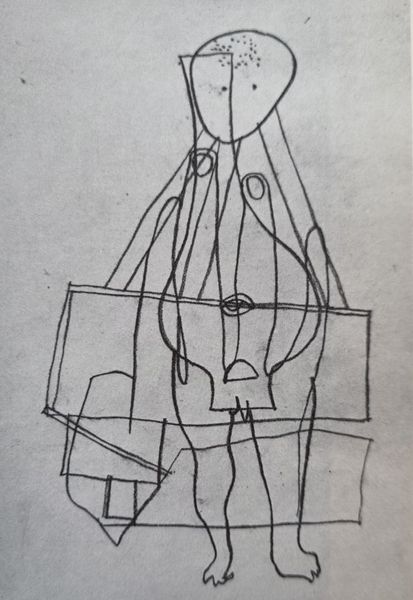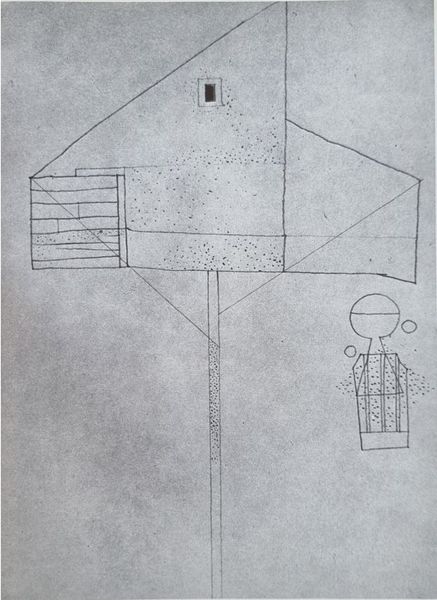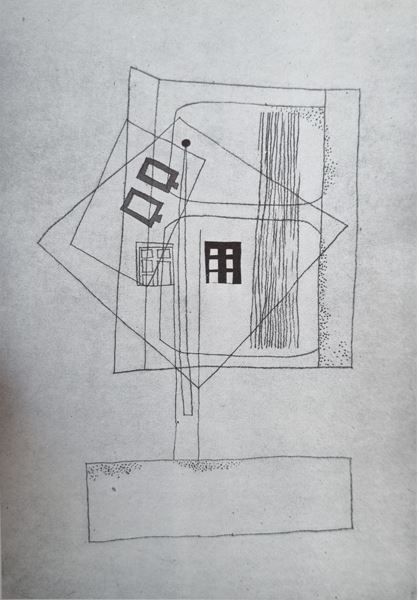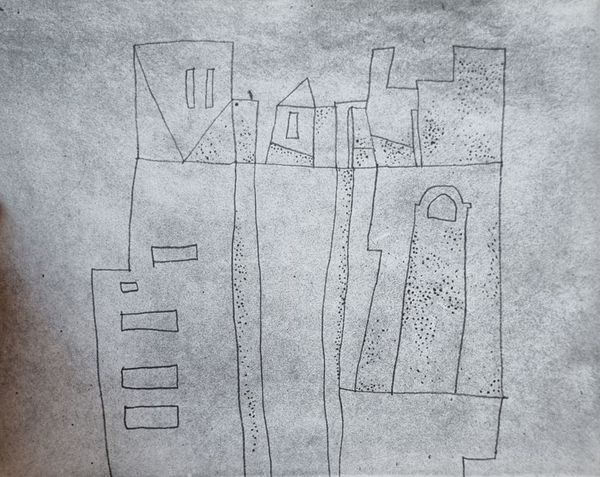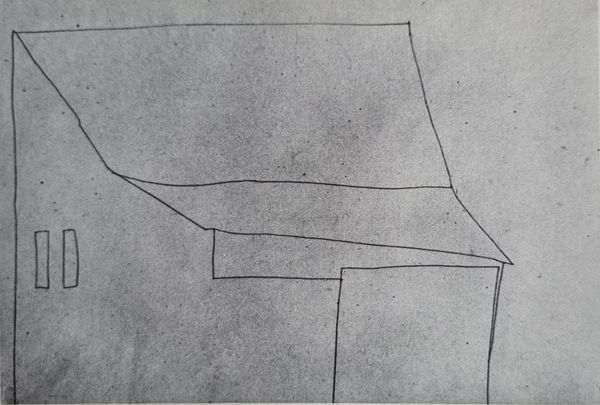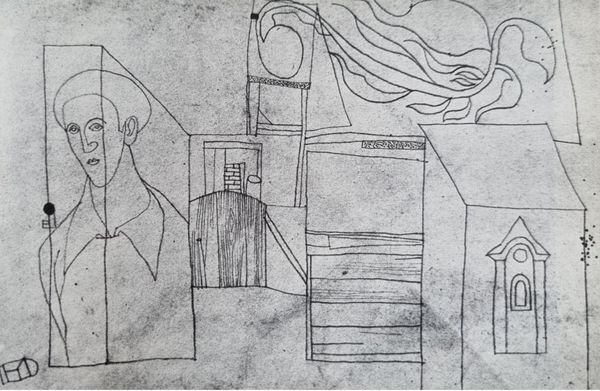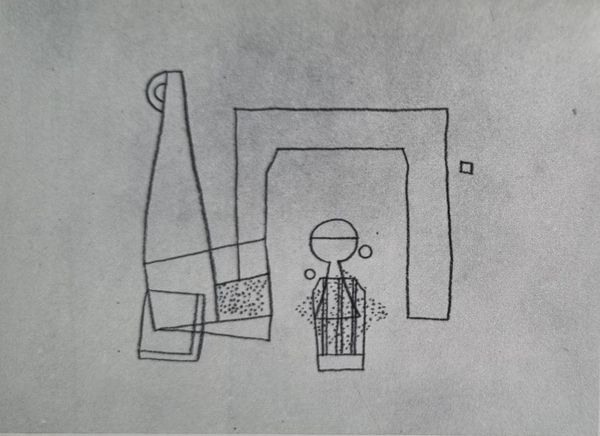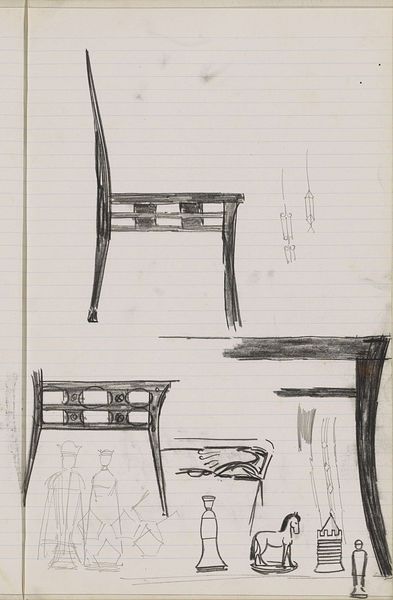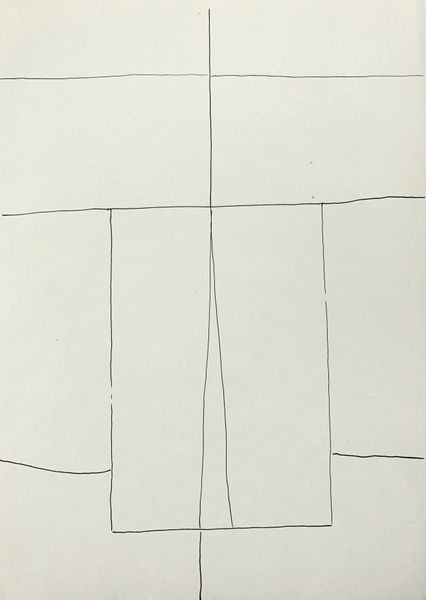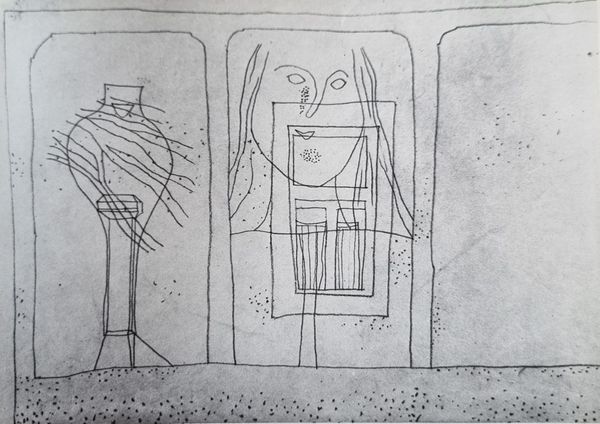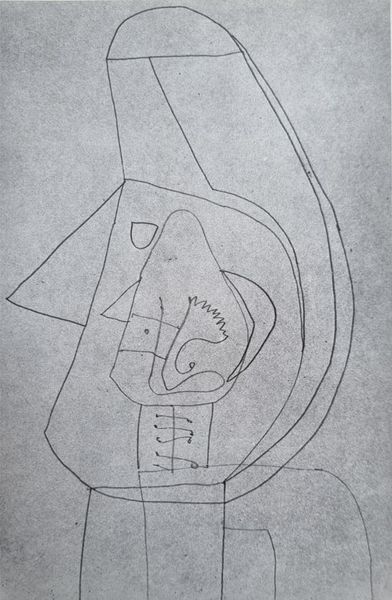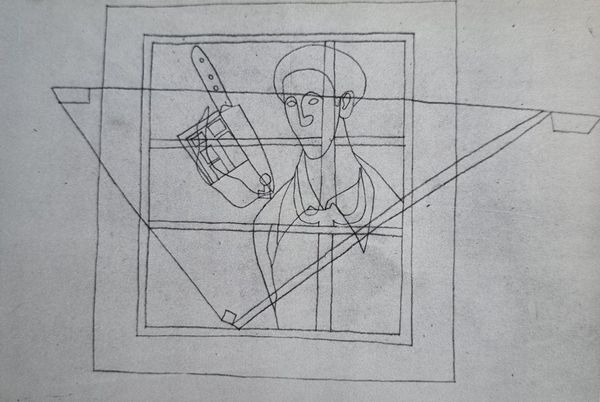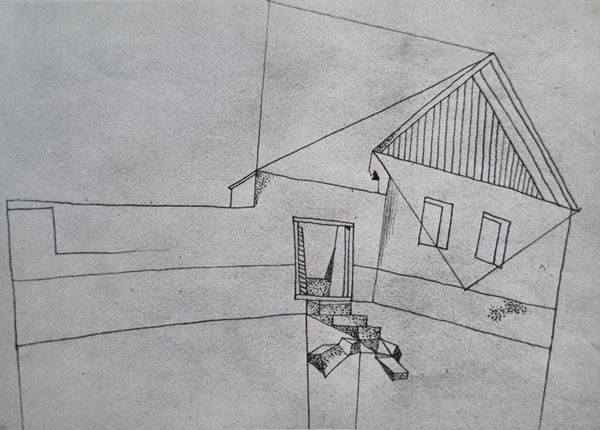
#
amateur sketch
#
toned paper
#
light pencil work
#
sketched
#
incomplete sketchy
#
personal sketchbook
#
sketchbook drawing
#
quick sketch
#
fashion sketch
#
sketchbook art
Copyright: Public domain
Editor: Here we have Vajda Lajos's "Vásári Síp Kapuval" from 1937, a rather intriguing piece done in pencil. The initial feeling I get is one of almost childlike simplicity, but there's something unsettling in the composition. How do you interpret this work? Curator: This sketch, appearing deceptively simple, sits within a turbulent historical context. Consider the year: 1937. Across Europe, anxieties surrounding fascism and impending war were escalating. Vajda, working in Hungary, would have been keenly aware of these socio-political pressures. The rudimentary figures and abstracted architectural elements could be interpreted as a commentary on the dehumanizing effects of political ideologies and rigid social structures. Editor: Dehumanizing, how so? I initially saw it as rather innocent. Curator: Look closer at the figures, they are stripped of individual characteristics, reduced to basic shapes, and almost caged. It's relevant to investigate how abstraction in art became a form of coded resistance during this period, a way to critique the prevailing order without direct confrontation. Editor: So the 'gate' isn’t just an architectural element but a barrier? Curator: Precisely. Ask yourself: what is being kept in or out? And consider the implications within the historical framework. Vajda's work forces us to grapple with the complex relationship between art, society, and political expression. Editor: That really reframes the piece. I thought it was a naive sketch, but it sounds like it's heavily engaged with the world around it. I'll never look at simple lines the same way. Curator: Exactly. Recognizing art’s inherent social context illuminates its profound layers of meaning and expands our understanding of history itself.
Comments
No comments
Be the first to comment and join the conversation on the ultimate creative platform.
